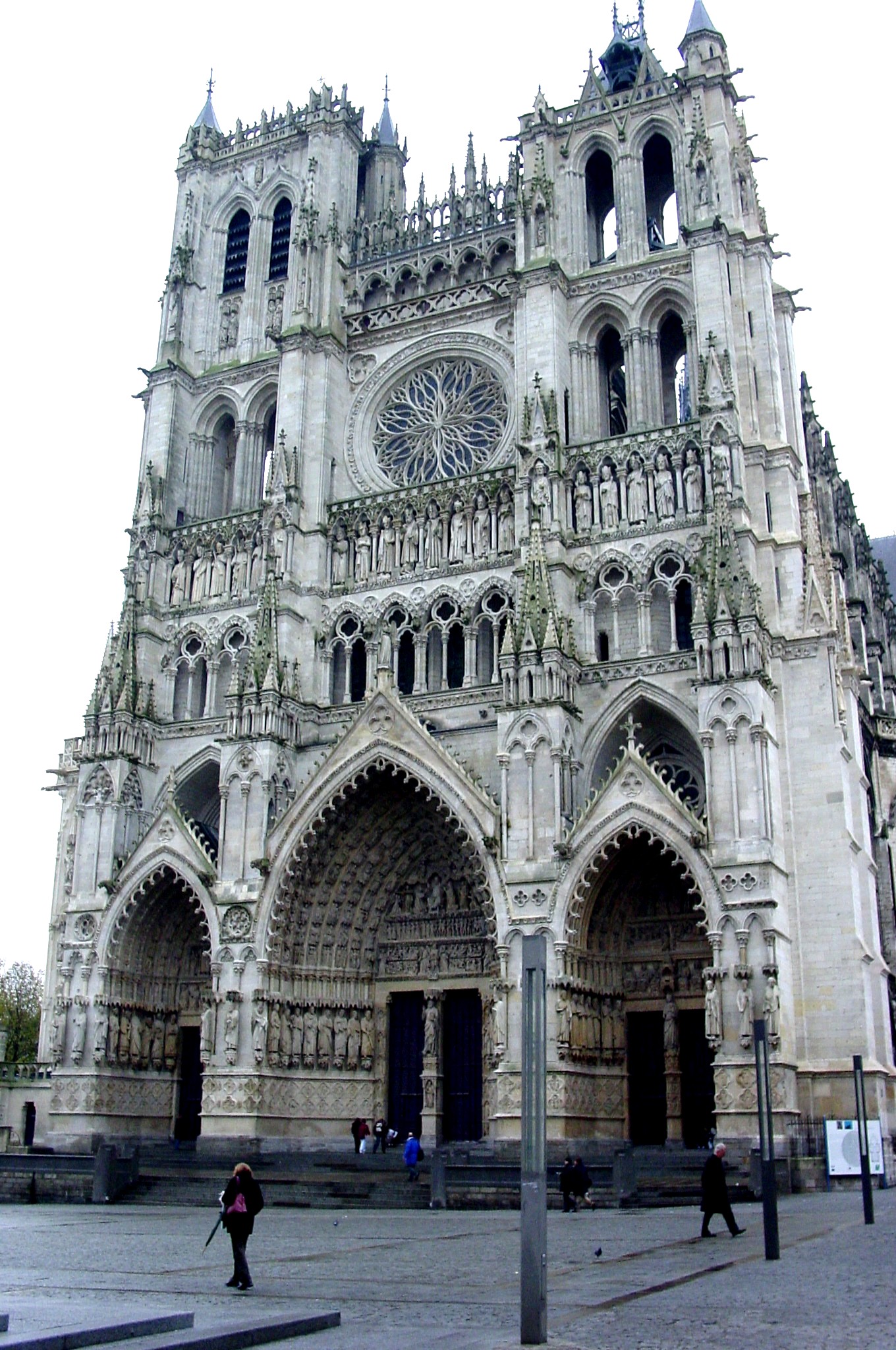Yesterday, the world of architecture celebrated 200 years since Eugene Viollet-le-Duc was born. He was a leading figure in the field of architecture during the 19th century, his theoretical works as well as his numerous restorations having a tremendous influence on the evolution and concepts of modern architecture.

Best known for his interpretive restorations of medieval buildings, Viollet-le-Duc was born on 27 January 1814 in Paris and died on 17 September 1879 in Lausanne, Switzerland, where he had constructed a villa. Rebellious in his youth, he refused to enter the École des Beaux-Arts, going, instead, for direct practical experience. Viollet-le-Duc was a pupil of Achille Leclère but was inspired in his career by the architect Henri Labrouste. In 1836 he traveled to Italy, where he spent 16 months studying architecture. Back in France he was drawn irrevocably to Gothic art. J.-B. Lassus first trained Viollet-le-Duc as a medieval archaeologist on the restoration of Saint-Germain-l’Auxerrois (1838). In 1839 his friend, the writer Prosper Mérimée, placed him in charge of the restoration of the abbey church of La Madeleine at Vézelay (1840), the first edifice to be restored by a modern state commission.
Viollet-le-Duc's "restorations" frequently combined historical fact with creative modification. "To restore an edifice", he observed in the Dictionnaire raisonné, "is not to maintain it, repair or rebuild it, but to re-establish it in a complete state that may never have existed at a particular moment".
In the early 1840s (through the 1860s) he worked with Lassus on restoring the Sainte-Chapelle in Paris, and in 1844 he and Lassus were appointed to restore Notre-Dame de Paris and to build a new sacristy in the Gothic style; this commission was regarded as an official sanction for the Gothic Revival movement in France. Another important early restoration was the work done in 1846 on the abbey church of Saint-Denis. After 1848 he was associated with the Service des Édifices Diocésains, supervising the restoration of numerous medieval buildings, the most important being the Amiens Cathedral (1849), the synodal hall at Sens (1849), the fortifications of Carcassonne (1852), and the church of Saint-Sernin at Toulouse (1862).
In 1840 Mérimée, as Inspecteur Général des Monuments Historiques, the commission responsible for assigning restoration projects, nominated Viollet-le-Duc for the restoration of the church of the Madeleine, Vézelay. Viollet-le-Duc replaced the later 13th-century pointed vaults with 12th-century semicircular groin vaults in order to give a sense of unity to the nave, but changing the character of the building. He continued to work on other restorations of churches, many of which had been damaged in the French Revolution and needed sculptural replacement to return them to their didactic ambiance.


In Sainte-Chapelle and in 1844 Notre-Dame de Paris, a commission with his colleague, Jean-Baptiste Lassus, Viollet-le-Duc substituted new sculpture for the old, often moving the old to museums. Notre-Dame marked the first of Viollet-le-Duc extemist interventions in churches, altering building to fit his romantic vision the middle ages. Notre-Dame's famous gargoyles (grotesques), for example, are wholely his inventions.


Amiens Cathedral (Cathédrale Notre-Dame d'Amiens) is the tallest Gothic church and largest cathedral in France. Along with the cathedrals of Chartres and Reims, Amiens is a member of the illustrious triad of "High Gothic" or "Classical" French cathedrals built in the 13th century. Massive restoration work in the Amiens Cathedral was undertaken by Viollet-le-Duc in the 1850s.

Viollet le Duc also designed buildings himself, but it is said that he was not interested in his own architecture. His one major building is St Denis-de-l’Estrée at St Denis (1862-6) which shows a departure away from the Gothic Revival into a more spacious systematic style. Being influenced by the medieval craftsmen of the 13th century, Viollet le Duc condemned the overuse of Gothic Revival.
Viollet-le-Duc can be said to have dominated 19th-century theories of architectural restoration; his initial aim was to restore in the style of the original, but his later restorations show that he often added entirely new elements of his own design. Twentieth-century archaeologists and restorers have severely criticized these fanciful reconstructions and added structures posing as restorations, for they often destroy or render obscure the original form of the edifice.
Apart from his restoration work, Eugene Viollet-le-Duc is also renowned for his numerous publications. All this work was published, first in serial, and then as full-scale books, as:
- Dictionary of French Architecture from 11th to 16th Century (1854–1868) (Dictionnaire raisonné de l'architecture française du XIe au XVIe siècle) including numerous illustrations.
- Dictionary of French Furnishings (1858–1870) (Dictionnaire raisonné du mobilier français de l'époque Carolingienne à la Renaissance.)
- Entretiens sur l'architecture (in 2 volumes, 1863–72), in which Viollet-le-Duc systematized his approach to architecture and architectural education, in a system radically opposed to that of the École des Beaux-Arts, which he had avoided in his youth and despised.
- Histoire de l'habitation humaine, depuis les temps préhistoriques jusqu'à nos jours (1875). Published in English in 1876 as Habitations of Man in All Ages. Viollet-Le-Duc traces the history of domestic architecture among the different "races" of mankind.
- L'art russe: ses origines, ses éléments constructifs, son apogée, son avenir (1877), where Viollet-le-Duc applied his ideas of rational construction to Russian architecture.
References:
Arhitectura. Evolutie, stiluri, personalitati, Ed. Litera
http://en.wikipedia.org/wiki/Eug%C3%A8ne_Viollet-le-Duc
http://www.britannica.com/EBchecked/topic/629711/Eugene-Emmanuel-Viollet-le-Duc
http://www.dictionaryofarthistorians.org/violletleduce.htm
http://www.sacred-destinations.com/france/amiens-cathedral
http://www.architecture.com/Awards/RoyalGoldMedal/175Exhibition/WinnersBiogs/1800s/1864.aspx
No comments:
Post a Comment